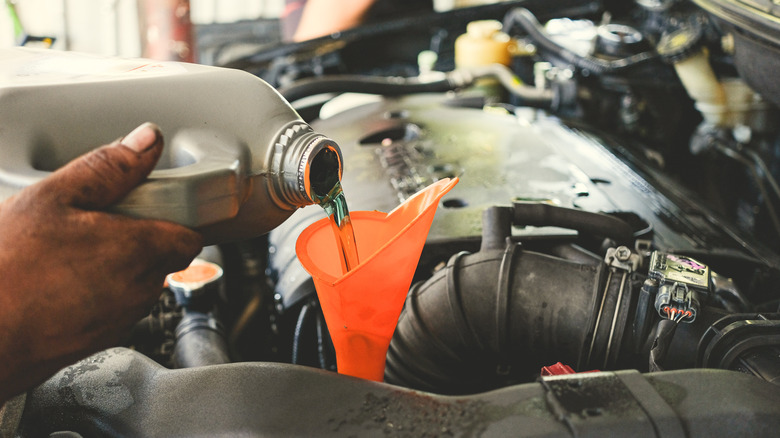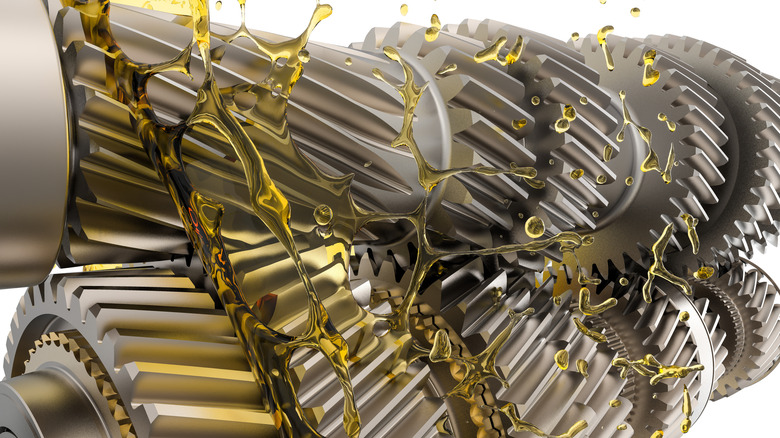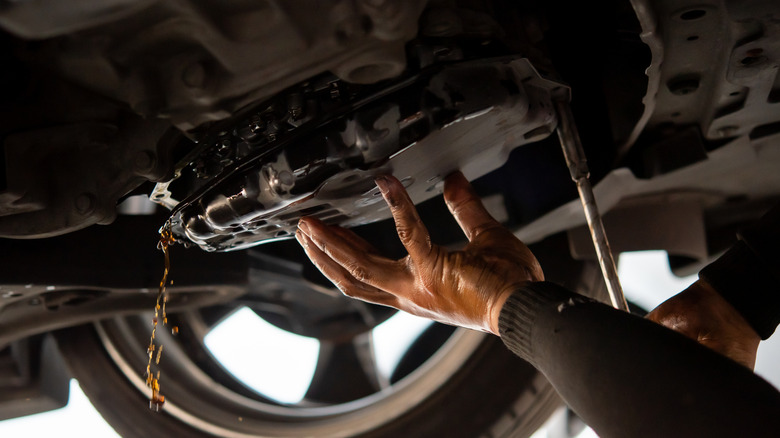Why Mixing Transmission Fluids Can Destroy Your Car
It goes without saying that your transmission is one of the most critical components of your vehicle. The layman's description of how it works is fairly intuitive: the transmission is the middle-man between the engine and the driveshaft. Most vehicles can't use direct-drive systems because doing so would stall the engine; a transmission allows the engine's crankshaft to spin at a different rate than the output shaft.
Most automatic transmissions operate on the principle of fluid dynamics –- that is, they use specialized transmission fluid in a device called a torque converter instead of a clutch like a manual transmission. This is what you're actually pouring automatic transmission fluid (ATF) into when you change it. Manuals use their own fluid, called manual transmission fluid (MTF). MTF is particularly heavy and viscous, far more so than ATF; the two absolutely will not mix. However, all the following rules for ATF apply to MTF as well concerning which compound is appropriate to use when it's time to change your transmission fluid.
There are many types of transmission fluids on the market; for instance, ATF has Dexron VI (GM), Mercon V (Ford), ATF+4 (Stellantis), and multi-vehicle compositions, to name several. Every major manufacturer builds their cars to utilize a certain formula; deviating will cause the torque converter to behave abnormally. Symptoms include slipping gears, your car not shifting into gear, burning or overheating smells, and more. These will only get worse over time, leading to irreparable damage. So it's vital to make sure that you use the correct fluid, filled to the correct amount, for your particular make and model.
How transmission fluid works
Transmission fluid performs multiple tasks, from more passive roles such as lubrication, heat dissipation, and as a preservative; to acting as a power-transfer element in automatics.
The way ATF works is mainly through interacting with the torque converter. Essentially, a torque converter is a turbine between the engine and transmission, and it uses viscous fluid instead of a clutch to move the various elements. Think of it like water spinning a hydroelectric generator; the same principle applies to ATF spinning the torque converter. If a converter contains a known quantity and viscosity of fluid, then the manufacturer can design a pump, lines, etc. to accommodate this.
MTF functions similarly to a car's engine oil; it immerses the gears in a thick fluid, acting as a lubricant, preservative, and heat-retention agent. Because of how manual transmissions work, the principles of leverage impart great forces onto the gears themselves, generating friction, heat, and ultimately wear. Many of these surfaces were more forgiving on older vehicle models, but these days, manual transmissions feature advanced materials designed to help prevent this wear -– a needed addition because of the number of gears and the power they're expected to handle. That's why newer cars are less forgiving about the specific MTF composition than older cars, and why it's vital to your vehicle's longevity to only use the correct type of fluid (a principle that equally applies to ATF as well). This friction is also one of the reasons why you shouldn't leave your car in-gear when stationary (one of many common errors that manual beginners make).
Why transmission fluid is so important
Putting too little or too much fluid in will lead to the system aerating the fluid -– meaning, the fluid will develop air bubbles, causing cavitation. Because air is compressible and hydraulic fluid is not, this means that various components may not get actuated properly, such as clutch packs and switches. This leads to problems ranging from delayed gear changes to whole gears dropping, coupled with all the other issues associated with poor fluid exchange.
Similarly, it's vital to fit transmission fluid of a known viscosity to your vehicle. A fluid that is either too viscous or not viscous enough won't behave in the manner your vehicle expects. Transmission fluid cycles through the system at high pressures and temperatures; using the wrong type of fluid can cause the fluid to vaporize and produce excessively high or low pressures. This means that the fluid produces small pockets of gas which will oxidize components and feed inaccurate readings to pressure sensors in the fluid lines. In addition, those lines and sensors are designed to accommodate specific viscosities. Picture getting water versus syrup through a straw – this can wear out and damage various components.
The names of ATF and MTF are all fairly confusing and unintuitive, so the easiest way to select which is right for your car is to simply follow what it says in your user manual. Most popular brands utilize a specific fluid with certain additives tailored to their vehicles; deviating from this can cause all the aforementioned issues to crop up. And these issues can get really expensive really quickly, with rebuilds often costing in the low-mid four digits.


